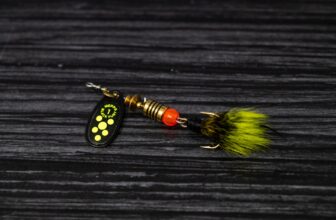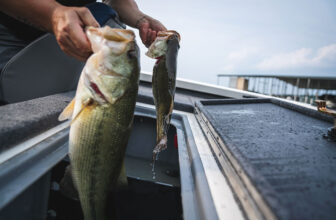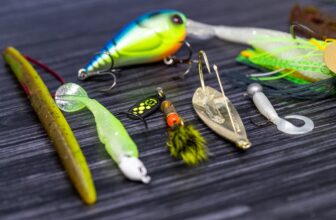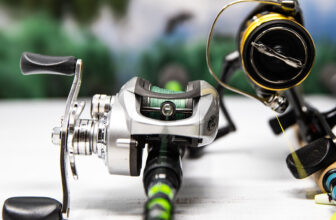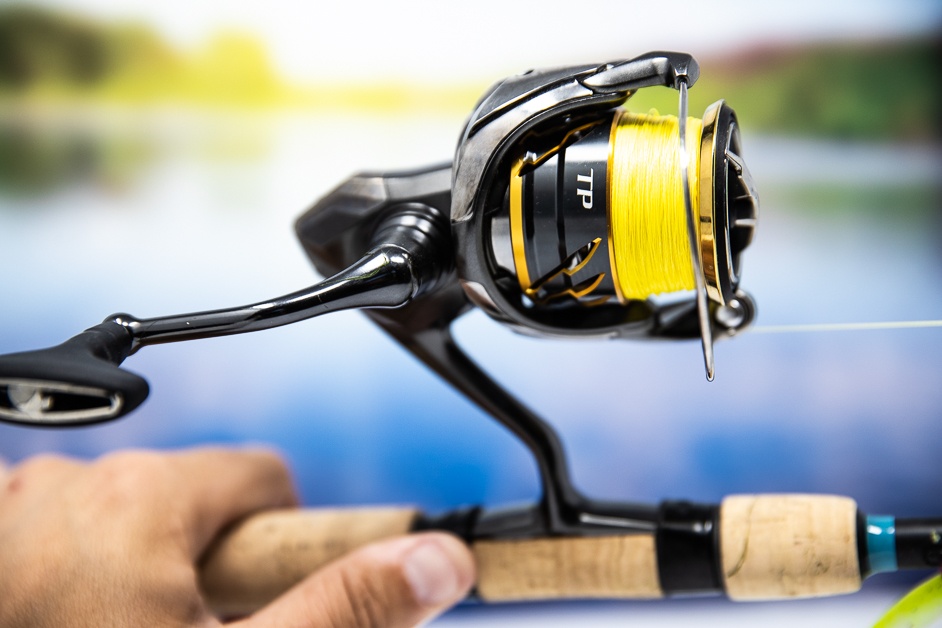
Fishing is a great way to spend time outdoors and enjoy nature. However, for beginners, it can be confusing and difficult to get started. One of the most important aspects of fishing is learning how to string a fishing pole. In this article, I will guide you through the process of stringing a fishing pole like a pro, from choosing the right fishing line to maintaining your fishing pole.
Introduction to stringing a fishing pole
Stringing a fishing pole is the process of attaching a fishing line to a fishing rod. This is an essential step in the fishing process, as it determines how well your line will cast and how easily you can reel in your catch. Stringing a fishing pole can be a daunting task, especially for beginners, but with the right tools and techniques, it can be done easily and quickly.
Types of fishing poles
Before you can learn how to string a fishing pole, you need to choose the right type of fishing pole for your needs. There are many different types of fishing poles available, each designed for a specific type of fishing. Some common types of fishing poles include:
- Spinning rods: These are the most common type of fishing poles and are suitable for a wide range of fishing situations. Spinning rods are easy to use and can be used by beginners and experienced anglers alike.
- Baitcasting rods: These are more advanced fishing poles and are designed for experienced anglers. Baitcasting rods are suitable for fishing in freshwater and saltwater and are best used for catching larger fish.
- Fly rods: These are specialized fishing poles designed for fly fishing. Fly rods are lightweight and flexible and are used to cast a fly line to catch fish.
Choosing the right fishing line
Once you have chosen your fishing pole, you need to choose the right fishing line to use. Fishing lines come in different materials, strengths, and thicknesses, and choosing the right one is essential for a successful fishing trip. Some common types of fishing lines include:
- Monofilament lines: These are the most common type of fishing line and are suitable for a wide range of fishing situations. Monofilament lines are easy to handle and are available in different strengths and thicknesses.
- Braided lines: These are more advanced fishing lines and are designed for experienced anglers. Braided lines are stronger and thinner than monofilament lines and are best used for catching larger fish.
- Fluorocarbon lines: These are specialized fishing lines designed for fishing in clear water. Fluorocarbon lines are virtually invisible underwater and are best used for catching fish that are easily spooked.
Preparing the reel for stringing
Before you can string your fishing pole, you need to prepare the reel. This involves attaching the fishing line to the reel and spooling the line onto the reel. Here are the steps to prepare the reel for stringing:
How to String a Spincast Reel
- Thread the Line through the Rod Guides: Start by threading the fishing line through the first guide on the fishing rod, then continue threading it through each guide until you reach the spincast reel.
- Tie a Knot and Attach the Line: Tie a secure knot at the end of the fishing line, then attach it to the spincast reel by opening the bail and looping the line around the spool.
- Wind the Line onto the Spincast Reel: Once the line is attached, start winding the line onto the spool by cranking the handle of the spincast reel. Make sure to keep the line taut and even as you wind it onto the spool.
- Trim the Line and Test the Reel: Once the spool is full, trim any excess line and test the reel by casting the line a few times to ensure it is working properly.
How to String a Spinning Reel
- Open the bail on the spinning reel or release the spool on the baitcasting reel.
- Tie the end of the fishing line to the reel using an arbor knot or a uni knot.
- Place the spool of fishing line on the ground or a table.
- Hold the fishing rod with one hand and use the other hand to start spooling the line onto the reel.
- Keep tension on the line as you spool it onto the reel to prevent tangles.
How to String a Baitcaster
- Thread the Line through the Rod Guides: Start by threading the fishing line through the first guide on the fishing rod, then continue threading it through each guide until you reach the baitcaster reel.
- Tie a Knot and Attach the Line: Tie a secure knot at the end of the fishing line, then attach it to the baitcaster reel by opening the bail and looping the line around the spool.
- Adjust the Tension and Spooling Speed: Before winding the line onto the reel, adjust the tension and spooling speed on the baitcaster reel. This will help prevent backlashes and ensure that the line is wound evenly onto the spool.
- Wind the Line onto the Baitcaster Reel: Once the line is attached and the tension and spooling speed are adjusted, start winding the line onto the spool by turning the handle of the baitcaster reel. As you wind the line, make sure to keep it taut and even to prevent tangles and ensure proper casting.
How to String a Fishing Pole – step-by-step guide
Now that you have prepared the reel, it’s time to string the fishing pole. Here is a step-by-step guide to stringing a fishing pole:
- Thread the fishing line through the guides on the fishing rod, starting at the bottom and working your way up to the tip.
- Tie the fishing line to the reel using an arbor knot or a uni knot.
- Close the bail on the spinning reel or engage the spool on the baitcasting reel.
- Hold the fishing line with one hand and start reeling in the line with the other hand.
- Keep tension on the line as you reel it in to prevent tangles.
Tips for stringing a fishing pole like a pro
- Use the right type of fishing line for the type of fishing you will be doing.
- Spool the line onto the reel properly to prevent tangles.
- Thread the line through the guides on the fishing rod carefully to prevent damage to the guides.
- Keep tension on the line as you spool it onto the reel and reel it in to prevent tangles.
- Practice stringing your fishing pole before you go fishing to get the hang of it.
Common mistakes to avoid while stringing a fishing pole
- Using the wrong type of fishing line for the type of fishing you will be doing.
- Not spooling the line onto the reel properly, which can lead to tangles and knots.
- Not threading the line through the guides on the fishing rod carefully, which can damage the guides.
- Not keeping tension on the line as you spool it onto the reel and reel it in, which can lead to tangles and knots.
- Rushing the process and not taking your time, which can lead to mistakes and frustration.
Maintenance tips for your fishing pole
To ensure that your fishing pole lasts a long time and performs well, it’s important to take good care of it. Here are some tips for maintaining your fishing pole:
- Clean your fishing pole after each use to remove dirt and debris.
- Store your fishing pole in a cool, dry place to prevent damage from moisture and sunlight.
- Check the guides on your fishing pole regularly for damage and replace any that are damaged.
- Check the reel on your fishing pole regularly for damage and replace any parts that are damaged.
- Have your fishing pole serviced by a professional at least once a year to ensure that it is in good condition.
Conclusion
Stringing a fishing pole may seem daunting at first, but with the right tools and techniques, it can be done easily and quickly. By choosing the right fishing pole, fishing line, and taking good care of your fishing pole, you can ensure that you have a successful and enjoyable fishing trip. So, grab your fishing pole and get ready to cast your line like a pro!
Happy fishing! Don’t forget to share your fishing stories and tips in the comments below.




